In 2003, HipHopDX began the “Industry 101” series. Staff members interviewed various executives in an attempt to provide readers with some transparency about exactly what happens behind the scenes in the music industry. Basic questions such as an A&Rs role or the specific duties of an executive producer were asked. But participants also disclosed how the changing media landscape impacted their jobs and, in some cases, even revealed the strategy behind specific moves. A lot has changed in the 11 years since those initial Q&As: Twitter and Spotify come to mind as examples. This week, HipHopDX will re-launch a special, three-part, limited edition of “Industry 101.” And as an indication of just how far technology has taken us and you as the reader, if you’d like to see more of this content, speak with your views. A lot has changed in 11 years, but at the end of the day, the music business is still based on the concept of supply and demand.
Damien Ritter Revisits “Knock Madness” & Organically Growing Funk Volume
From his childhood home in Southern California’s San Fernando Valley, Damien “Dame” Ritter and partner Marcus “Hopsin” Hopson have created a record label that grossed over $1 million in 2012—and before this year, you could not find an album of theirs in a record store anywhere.
Funk Volume may not sound like a typical label. It isn’t, as led by a Berkeley and Stanford University graduate, who before he was tweeting and promoting viral videos, worked as an analyst at Goldman-Sachs. Since helping his younger brother SwizZz and close-friend Hopsin with their bedroom label, Dame has helped build the imprint into a fully-independent, largely-digital outfit that’s challenged the charts, the media and the convention of what a label should look like.
Rather than fancy offices and expensively hourly recording studios, Funk Volume has enriched its philosophy of constant improvement through self-made music and video, dedicated social media presence, relentless touring, and most importantly, music that was missing in the marketplace.
On the heels of F.V.’s biggest release to date (and the first to be in stores), Dame described his partnership, business strategies at work on a Rap label, and how the music industry is recuperating the losses in CD sales right before our screen-stuck eyes.
HipHopDX: If you read books on record labels, a diverse artist roster has always been key to many success stories. At Funk Volume, that’s especially true; no two artists are alike. Tell me about the logic and planning behind that…
Damien Ritter: It was very intentional. There is a business reason for it as well, but just from a creative standpoint, our perspective is that for one reason or another, Hip Hop became so uniform. A lot of voices have been [muted], and a lot of perspectives have been cut off. The time I grew up, listening to Hip Hop, you had so many different perspectives—whether N.W.A, Public Enemy, MC Hammer, Vanilla Ice. There was so much more variety. Young people had somebody who either spoke their voice or something close to their voice that they could relate to. In the 2000s, that all changed. We try to contribute to that. From a creative standpoint, that’s what we felt needed to happen.
From a business perspective, if you’re trying to grow a label, I don’t think it’s smart to just have one image. In order to take advantage of opportunities that come to the table—Hopsin is sponsored by [clothing company] Famous [Stars & Straps]—and it works very well for him, but it wouldn’t work for Dizzy [Wright]. We have Rocksmith, DGK and L-R-G that reach out and want to work with Dizzy. We have to have a diverse set of artists. In addition to that, we want to collect as many fans as possible. If everybody had the same fans, we’d be seeing the same people at all of our shows and we’d have to grow it that way. [We have] fans who like Hopsin, but don’t like Dizzy, but there’s [also] definitely a lot of overlap. It expands the reach of the label as a whole. At the end of the day, there’s still a tie that binds them all. The Funk Volume brand is always made up of guys who appreciate the craft and can actually rap very well.
DX: Some of your roster was turned down by other labels prior to joining Funk Volume. In light of your success, how out of touch do you feel the traditional labels are with what the youth want to listen to?
Damien Ritter: It varies across the board, but there are some labels that are extremely out of touch. I’m online everyday, talking to fans. I think I have a good understanding of where our guys need to be and what the fans expect. I think [labels] are out of touch when they still approach us with a lot of ego. We give off the perception of the fact that we’re independent and we enjoy being it, to the point where they’ve never put out [an exact number to invest in the label], but from the discussions it’s obvious that they don’t value us in the way that we value ourselves. They don’t see what we see. They’re not in the numbers analyzing. They’re not coming to our shows.
How Damien Ritter Applied Marketing Case Studies To Funk Volume
DX: You don’t talk often about the fact that you have an MBA from Stanford University. However, is there something you learned as a student that you attribute to Funk Volume’s success?
Damien Ritter: Yeah. Initially, especially since I hadn’t been in the music industry, looking at case studies in school, you learn a way to approach a new problem very thoroughly, with different framework so that you’re looking at the entire picture. That researched approach helped us build a foundation and avoid some mistakes that maybe we would have ran into had we not. Being in the corporate world and being at Stanford grooms you a certain way, for professionalism. A certain level of structure doesn’t always exist in the music industry, however, you can really benefit from having it. It enhances your reputation and people want to work with you. It preps you to be ready to take advantage of opportunities.
Now that we’ve gotten bigger, I think the network will come into play. I have classmates that work at different brands that may want to get involved. I have classmates at Pandora, which was helpful. In the beginning, the network doesn’t help as much because nobody’s dealing with music like that. Now that we have a fan-base, we can speak to higher-level folks because we have the numbers to show that what we do is real.
DX:Whether Jerry Heller and Eazy-E, Suge Knight and Dr. Dre, or Dame Dash and Jay Z, many successful labels are a partnership of a businessman and an artist. How do you feel that’s played a role for you and Hopsin?
Damien Ritter: Hop’ was extremely crucial, from a marketing perspective. His uses his expertise: a little bit of controversy, some dope lyrics and dope music to get a lot of attention. The things that I help with, the advice and tips, puts that extra [angle] on it. We had Hopsin build up a foundation that was extremely valuable to the label, and to the other artists to really start the cross-promotion, to give them a jump-start as well. I don’t know if he feels pressure taken off of him, but I would hope so, now that we have other guys puttin’ up numbers and it’s more of a team effort.
DX: At the time you started Funk Volume, the urban music industry was seemingly set on the free music, mixtape model. Funk Volume and TDE have both thrived digitally, by selling music to fans that is readily available for free online. Tell me about that paradigm shift in the face of all the previous naysayers…
Damien Ritter: I’ve gone back and forth on whether music should be free or if people should pay for it. The albums we put out, those aren’t free. The mixtapes we put out, people have the option—like Dizzy Wright’s The Golden Age, which we just put out. They can download it for free, they can buy it from iTunes, or they can get an autographed hard copy. At the end of the day, people just want music how they want it. People that have grown accustomed to getting music for free, it’s going to be very difficult to change their behavior. The best option is to give people all the options. There are definitely other revenue streams out there. If people don’t buy the music, they’ll probably come to a show, or buy a shirt, or just share their music with friends who will buy the album. We just want out music out there.
DX: In LA Weekly’s profile of Funk Volume, they made reference to the fact that from a material standpoint, all of the artists are modest—not flashy in jewels or expensive cars. Is that something that comes from your influence?
Damien Ritter: I think it’s a combination of them being who they are; I don’t take them any of them as super-materialistic. We just got lucky—or I got lucky just being around young cats like that. I have schooled them on money-management, making sure they’re paying their taxes and if a check comes in, that check is not floating straight to their bank account to spend. That’s definitely one of the things I want them to learn and that they need to learn for their own personal development. So there is a focus there. We have people on the team that ensure that those things are taken care of. Jarren [Benton] has a family—he’s a little older, little more mature. Dizzy has a daughter. Hopsin doesn’t go out that much. SwizZz is a smart cat too.
DX: While you interface daily with some of your artists, I think Funk Volume has roots as a virtual label. Throughout that time though, your artists are constantly touring. In the Internet-era, how important is the live-show?
Damien Ritter: It’s very important. Once a fan gets to see you—or at our shows, talk to us, shake our hand—that creates a deeper connection. Hopefully that fan is a fan for life. I don’t know if you can create that connection if you’re not touring. We never lost money on a tour. We continued to build ourselves online so that the demand was there. That’s a huge benefit of us having access to the Internet, as opposed to 10 or 15 years ago, where you had to grow your demand by taking some losses.
How Funk Volume’s Model Evolved With Hopsin’s “Knock Madness”
DX: Hopsin’s Knock Madness was released last November. How important was that album in terms of Funk Volume’s history? What did you do differently?
Damien Ritter: There was a lot of pressure on me for that release. [Knock Madness] was the most anticipated album I’ve seen from an independent artist since I’ve worked on Funk Volume. We did things differently. Number one, we had physical distribution so that CDs were available in stores. We also launched an insider-access campaign to take fans behind-the-scenes of the making of the album, the thought-process behind it, and probably why it took so damn long. I think that helped create even more energy and excitement for the album. We had some cross-collaborations with some brands. Outside of that, it was what we do best: the visuals. Hopsin’s videos get a lot of attention… a lot of views. [“The Ill Mind Of Hopsin 6”], we released had over 3 million views on YouTube within a month of its release. That’s tremendous marketing power, and it doesn’t cost us that much to do.
DX: He makes his own videos.
Damien Ritter: We do spend a little bit more money on videos now, because we always want to enhance the quality of what we do. In the beginning, yeah, we didn’t hardly spend anything: Hopsin, cheap cameras and hard work. Now, I feel that we should make a video to every song, if we can, given the impact that it has. He’s got [three] videos that have close to 30 million views. What else are you gonna do to duplicate that kind of bang for your buck?
DX: That’s a revenue stream in of itself, right?
Damien Ritter: It’s definitely a healthy revenue stream—especially if you can get the type of video-plays that we get. They more than pay for themselves. There’s also other opportunities that are coming about through YouTube, that’s not just the ad [model]. Again, Hopsin is a Famous Stars & Straps contract. A lot of times, artists work deals that if they are wearing clothes in their videos, they’ll get a bonus based on how many additional views the video gets. Brands are starting to understand. YouTube is definitely in the Top 5 revenue streams for our label. If other labels are paying attention, it should be for them too.
DX: Do you see the walls between independent labels and major labels a little shorter in height than when you started?
Damien Ritter: Definitely. Some people in the majors are starting to get it. You’ll see that with them signing artists and not announcing it for a year-and-a-half. They want it to look independent, organic. Or you’ll have major labels that have different entities that service independent labels. You don’t have to sign—that’s what [Macklemore & Ryan Lewis] did. They work with ADA, which is owned by Warner [Music Group]. The people work on the same record [as Atlantic Records], utilizing the same resources, but it’s independent. The definition is changing. Some people don’t feel that’s independent; I do. I feel that if you have 100% control over your music and you can’t be bought, you’re independent.
DX: What song are you most proud of that Funk Volume put out?
Damien Ritter: It’s not a requirement that I’m a fan of your music to be a Funk Volume artist, ‘cause I don’t typically like that many Hip Hop artists. Fortunately, I am. I listen to it just as a fan. However, to answer your question, there’s a song called “I Am Raw” on Hopsin’s Raw album that features SwizZz. It really tells the story of Funk Volume—if you listen to the lyrics.
RELATED: Damien Ritter Explains Expanding Funk Volume, Keeping Artists Humble [News]

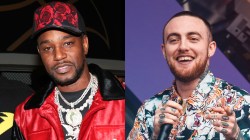
![Method Man Admits He Didn't Like Drake's "Wu-Tang Forever": "I [Wasn't] Getting On That"](https://hiphopdx.com/wp-content/uploads/2025/12/method-man-drake-wu-tang-forever-remix.jpg?w=250)
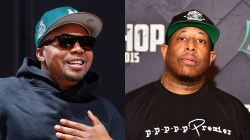

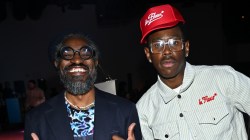

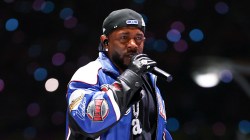
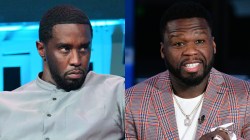

upto I saw the draft ov $4134 , I didnt believe that my best friend was like truly bringing in money part time from there labtop. . there neighbor has done this for less than 8 months and as of now repaid the loans on there apartment and got a top of the range Saab 99 Turbo . why not look here……http://x.co/40OVt
PUNK volume
Ha-ha-ha… You’re boring, Da Jokah.